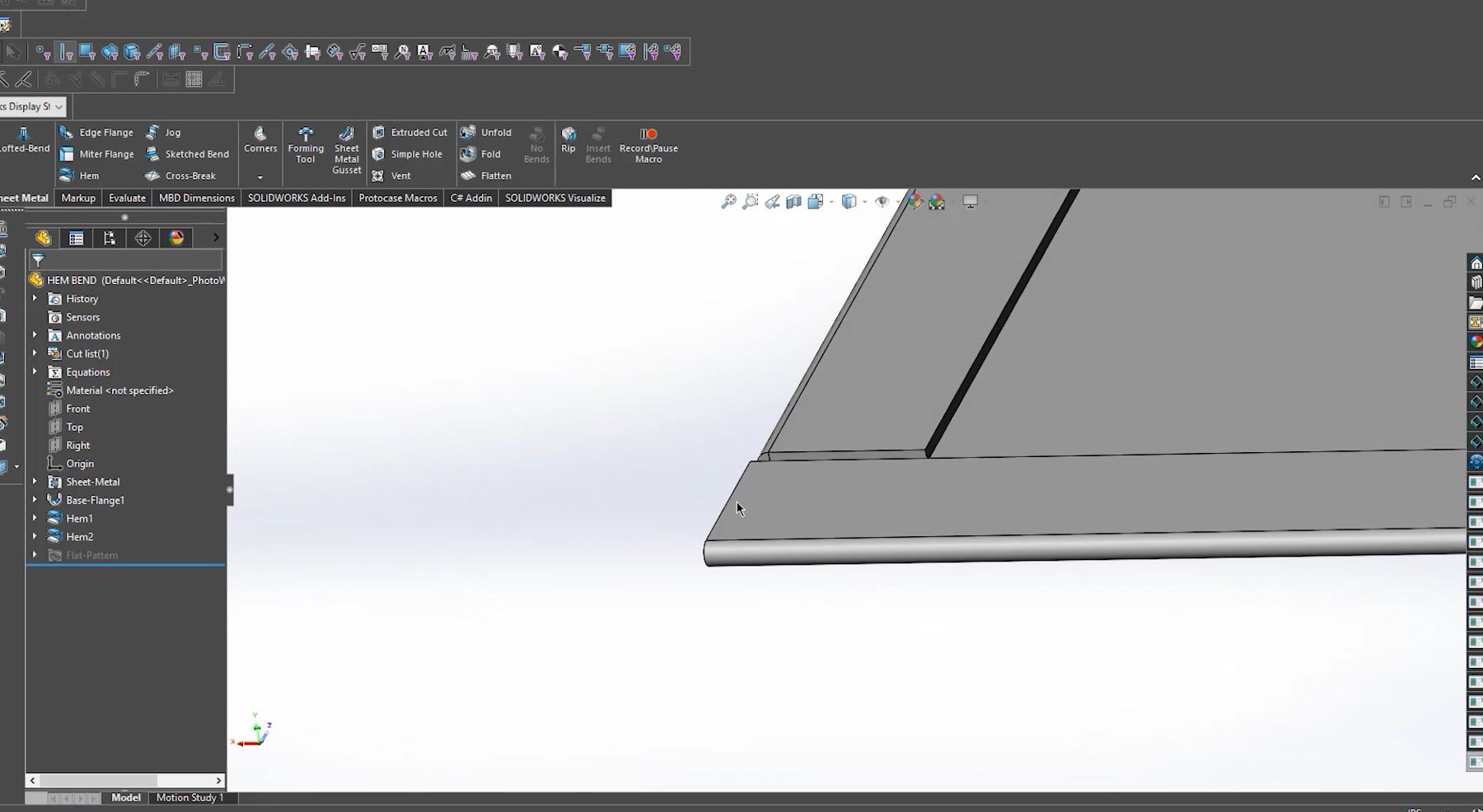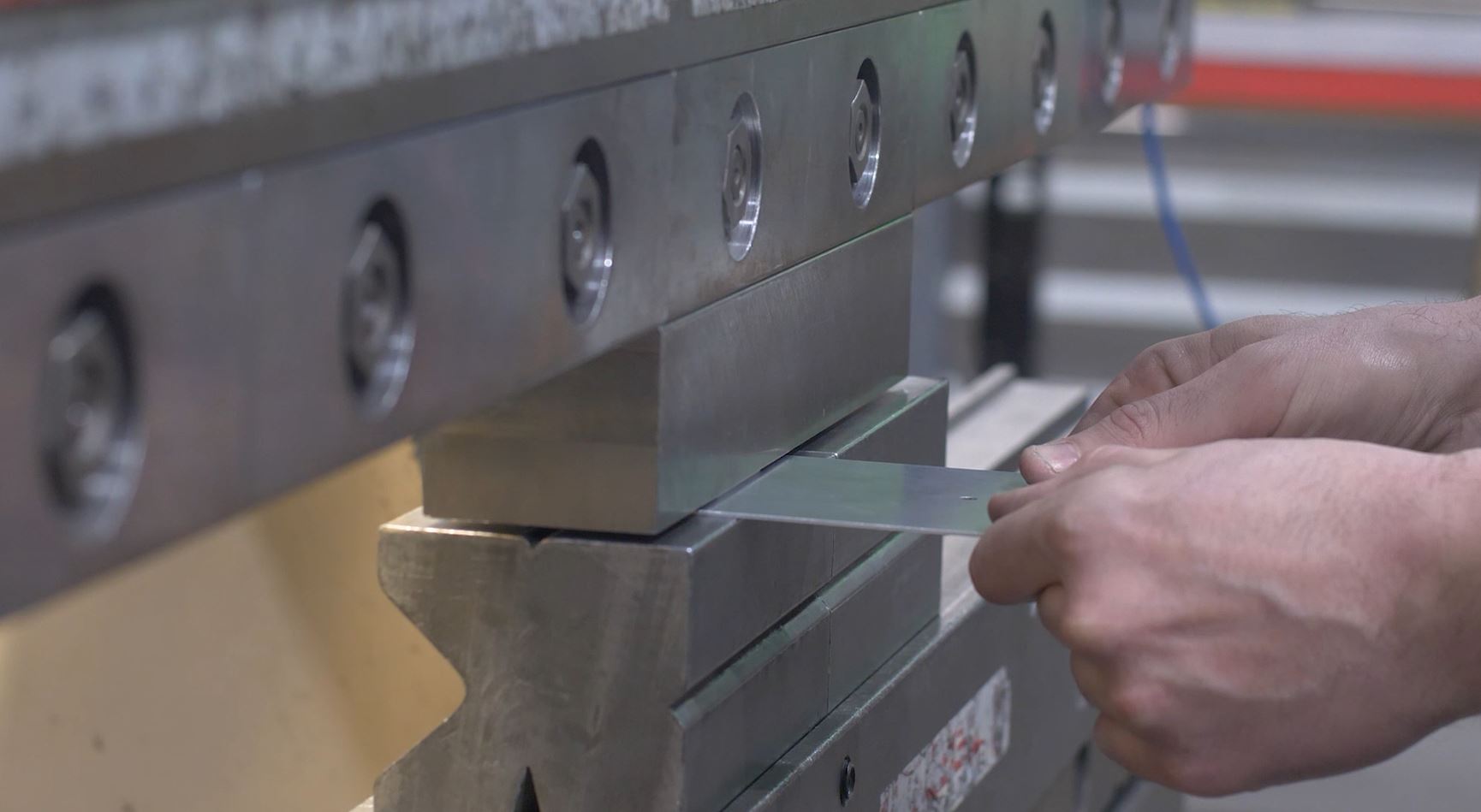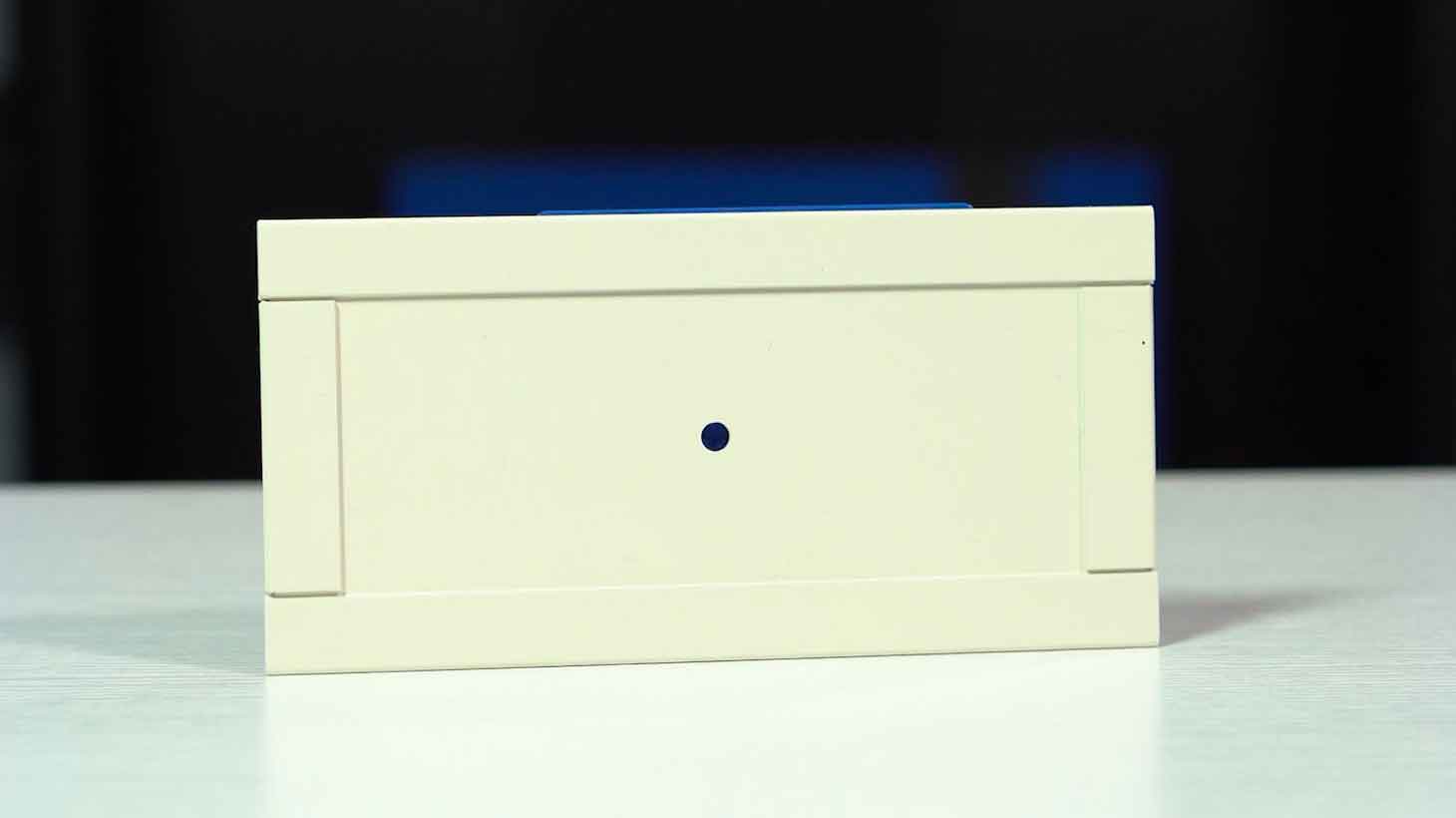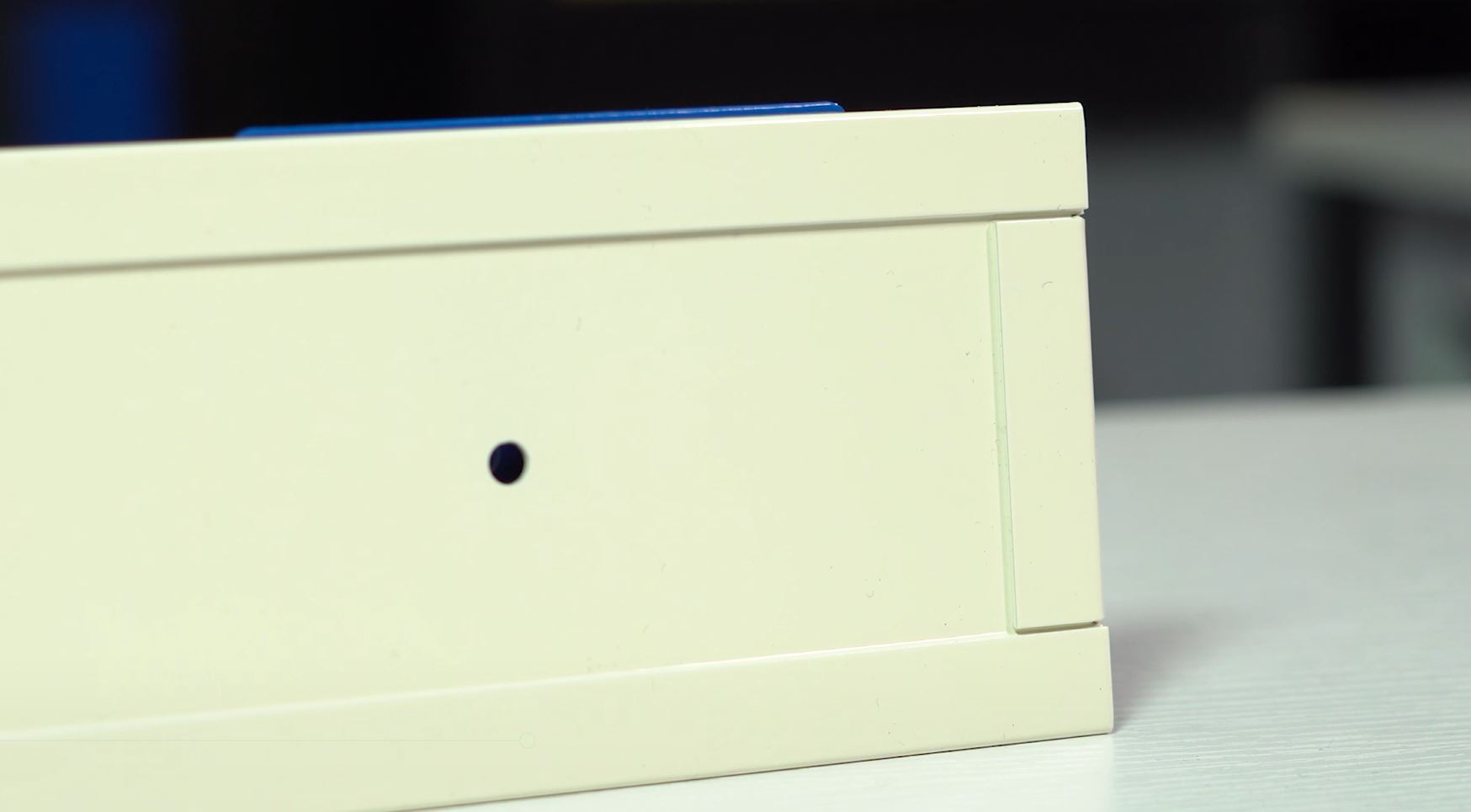Hem Bends
A hem bend is an edge of sheet metal that is bent 180 degrees and flattened on top of itself.
Hem bends add another layer of rigidity to any edge of a part, rather than a bare single-layer edge. This can be especially useful in long sections of a sheet-metal part that could be unstable. Hem bends will help keep the edges of a part straight and will drastically cut down on how much the material flexes.
Hem Bending Process
Hem bends are created on a press brake, with a large die bending the material as far as possible in order to create an overbend, then the bend is flattened with a flattening die to bend it on top of itself in order to make it flat.
Materials
Hem bends can be created on many types of sheet metal, including aluminum, cold rolled steel, galvanneal and stainless steel, so long as the material doesn’t exceed the maximum thickness.
| Material | Maximum Material Thickness |
|---|---|
| Aluminum | 0.051” (1.295mm) |
| Cold Rolled Steel | 0.075” (1.905mm) |
| Galvanneal | 0.079” (2.007mm) |
| Stainless Steel | 0.063” (1.6mm) |
Constraints
In order to create a hem bend, there must be enough material for it to be flattened on top of itself.
For this reason, we require a hem bend to be at minimum 0.5” (12.7mm) long.
Hem bends must be placed on an area of your part where our bending tools can access and not be impeded by
any surrounding geometry. Our Engineering & Design Services team can assess your design and its hem bend
placement.
Finishes
Parts with hem bends can be treated with any of our finishes, so long as the part meets the minimum and maximum dimensions for the particular finish you choose.





